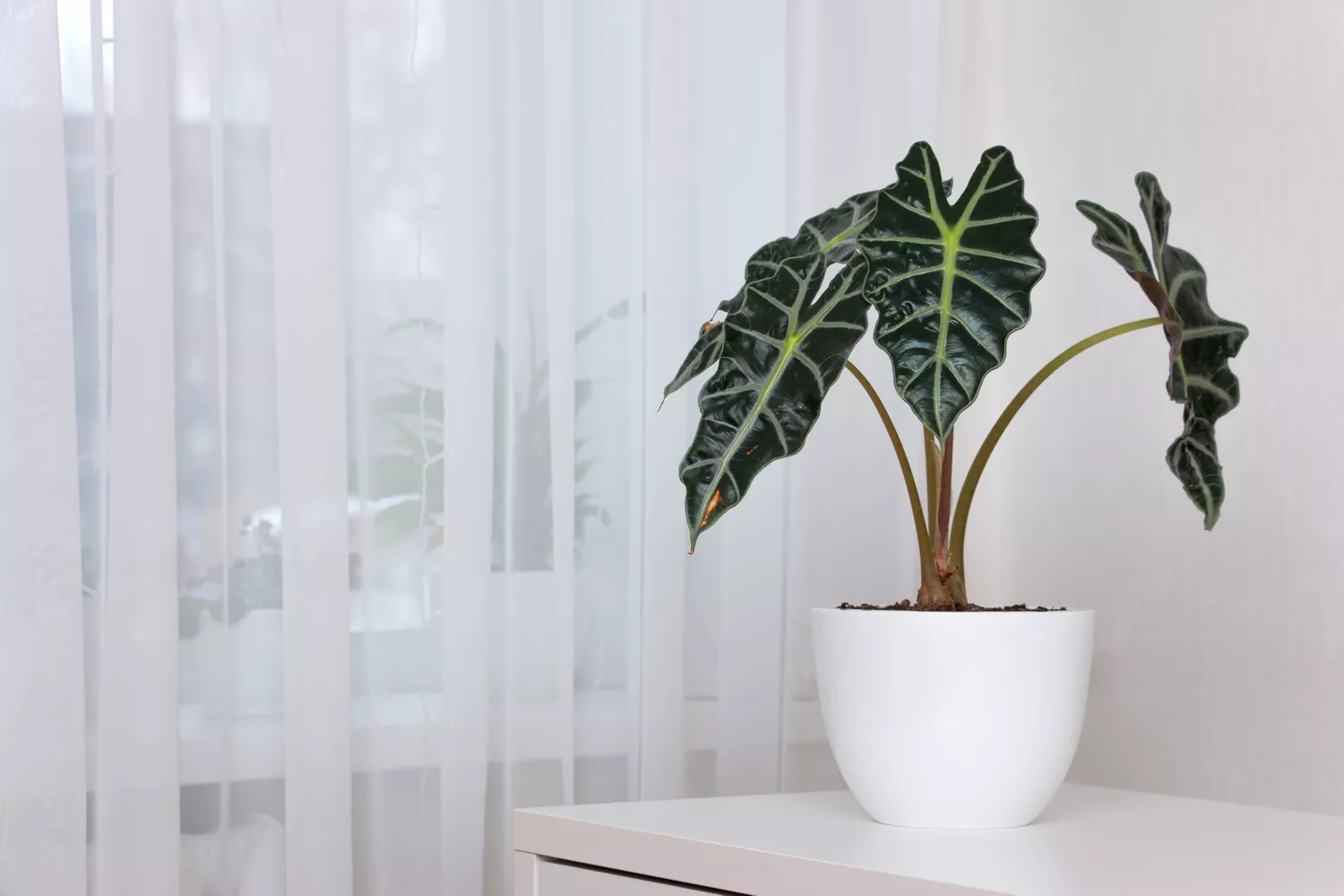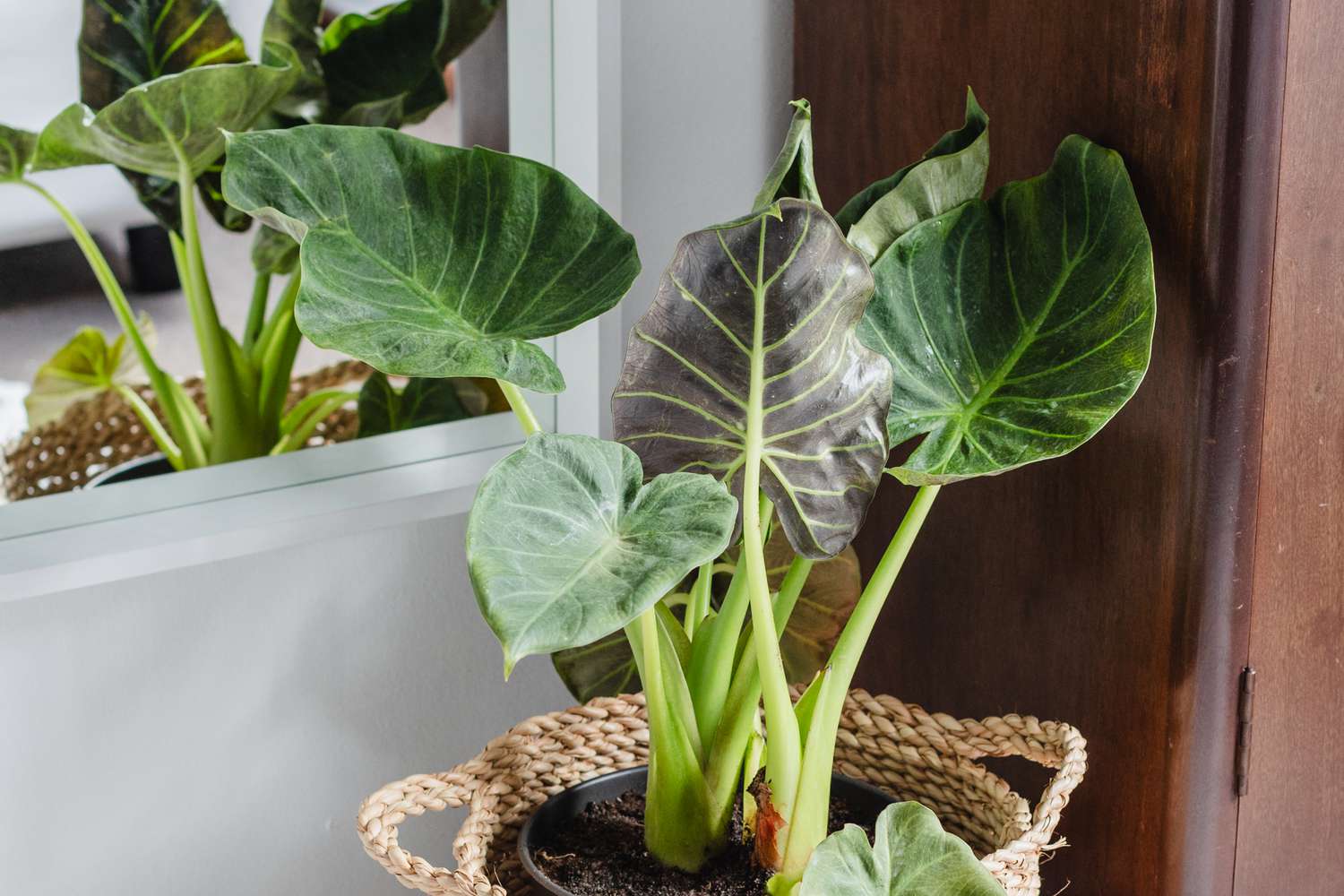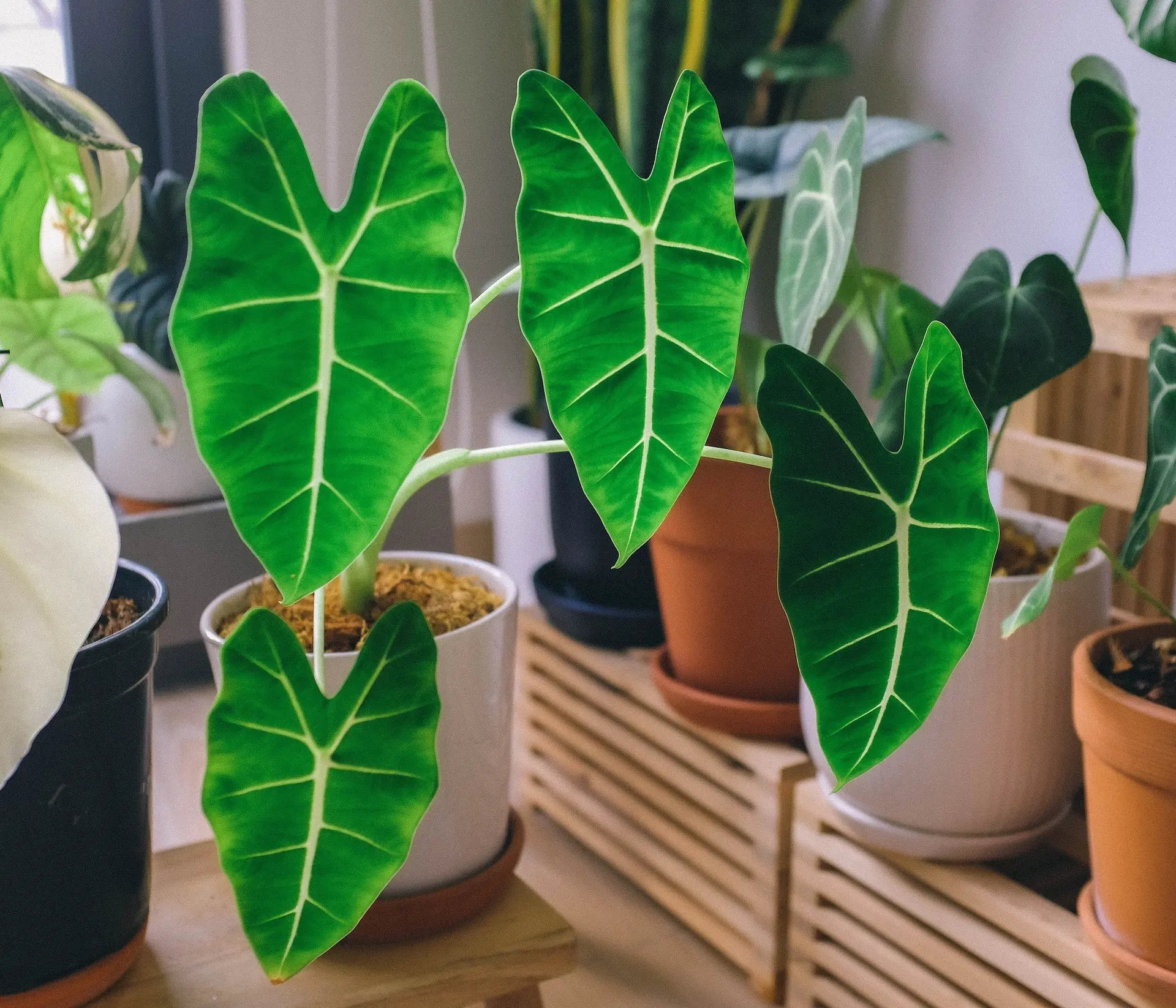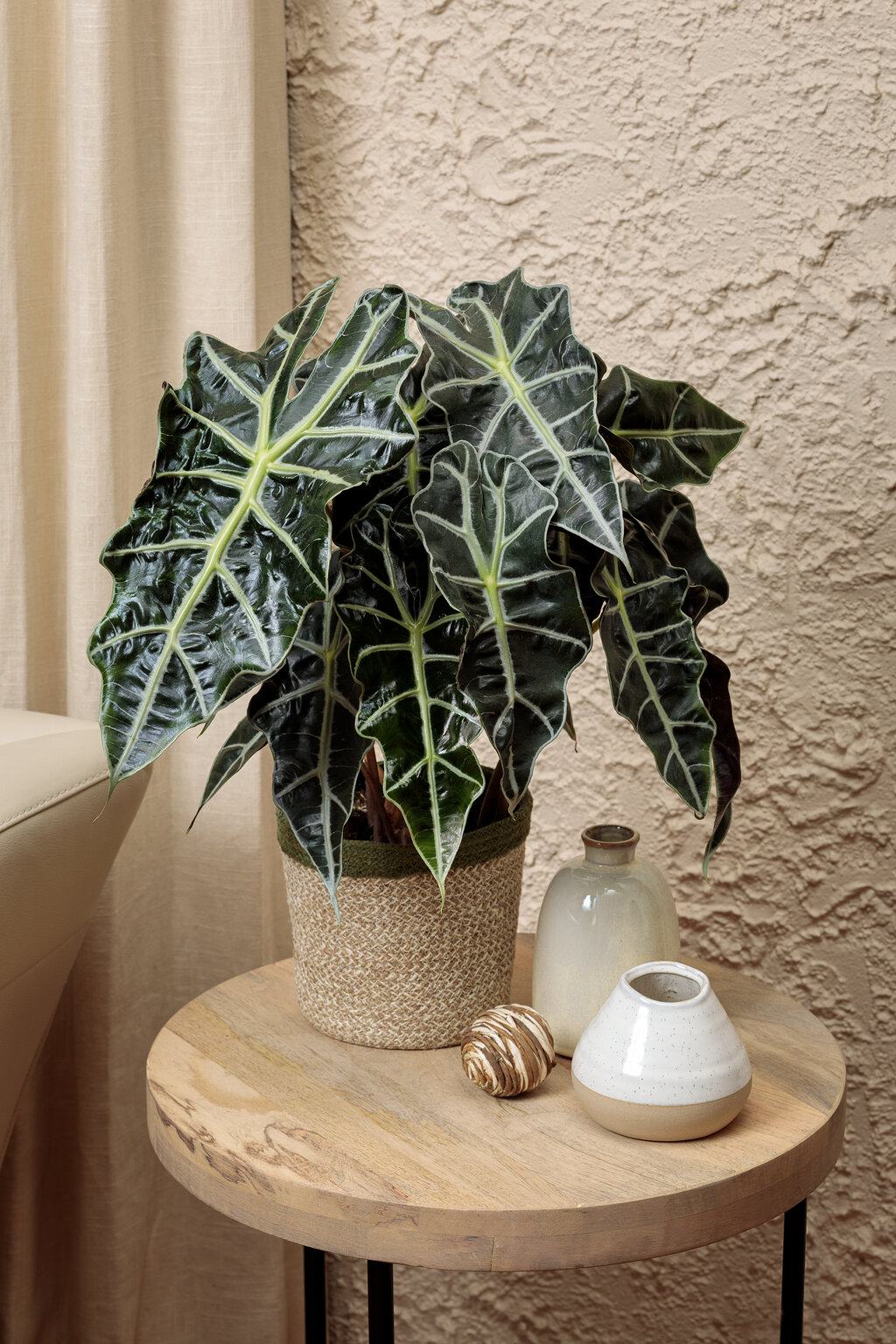
If you’ve noticed a striking houseplant everywhere recently, you may be tempted to add it to your collection. Native to Southeast Asia, Alocasia has been trending for the last few years for its dramatic heart-shaped leaves and stunning colors. Once difficult to find, several varieties such as ‘Polly,’ ‘Silver Dragon,’ and ‘Black Velvet’ are now readily available.
But before you take the plunge, you should know Alocasia requires a little more TLC than low-maintenance favorites such as snake plants and pothos. “Alocasia tends to need more attention,” says Justin Hancock, horticulturist with Costa Farms. “Some Alocasia go dormant if it’s too cool, too dry, or the light levels are too low. It will drop leaves, causing you to think it’s dead.”
Once Alocasia starts to go downhill, it happens fast! But the good news is that Alocasia grows from a rhizome, a sort of underground stem, which means it may not really be dead even if things look pretty bad. Once they’re dormant, they may rebound when conditions are ideal again, pushing out new growth within a month or two. That’s not something you can say about most houseplants!
Here’s what else you need to know about this beautiful (but sometimes diva-like) houseplant:
How do I care for an Alocasia plant?
Give Alocasia plants as much bright, indirect light as possible, says Hancock. Even though they grow in shaded areas on the forest floor in their native environment, they need tons of light. If you don’t have a bright window, a grow light also works. But don’t put them in direct sunlight, which can fry their foliage. Also, keep them away from drafty windows and heat or air conditioning vents.
How do I water an Alocasia plant?

This is where things get tricky: Most Alocasia plants don’t like to get too wet or too dry. Stick your finger in the soil, and water when the top two inches of soil feels dry. If you’re in doubt, wait another few days and check again. Generally, a little too dry is better than a little too wet with these plants, says Hancock.
What is the easiest kind of Alocasia to grow?
Alocasia is categorized by size: Dwarf plants max out at about 24 inches tall, intermediate-sized plants at around three to four feet, and large varieties can reach up to 10 feet tall. The largest types typically are grown outdoors as landscape plants and also may go by the name ‘elephant ear.’ A good first-time choice for indoors is the dwarf variety, ‘Polly,’ because it’s commonly available and not too expensive. Or try ‘Pink Dragon,’ which has pretty pink petioles.

Should I fertilize my Alocasia plant?
It’s not necessary, but you can give them some granular time-release general-purpose fertilizer if you like. Added fertilizer will last a few months so you won’t have to keep remembering to feed your plant, says Hancock.
Are Alocasia toxic to pets?


Unfortunately, Alocasia is toxic to humans, cats, dogs, and horses.1 These plants can cause pain and swelling of the mouth, vomiting, and drooling.2 If you have children or pets, you may want to avoid keeping these plants. If you suspect Alocasia has been ingested please seek medical attention right away.





